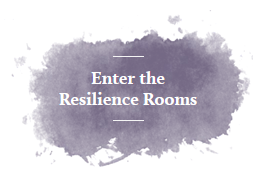The mind has “a mind of its own” and we can’t control incoming thoughts as hard as we may try. Learning to be present through mindfulness activities helps to tame the mind so there’s space between the thinking and doing. It alters our habitual responses by having us take a pause, so we can think about the decisions we want to make. When we purposefully take the moment to tune in, we get the chance to effectively process, problem solve, and act on behalf of our intrinsic values.
There tends to be confusion about what mindfulness is and why it’s helpful. The most popular definition of mindfulness, expressed by Jon Kabat-Zinn, is “paying attention in a particular way: on purpose, in the present moment, and nonjudgmentally.”[i] In simple terms, mindfulness is simply fully paying attention to what you are doing without judgment. It’s described as a state and not a trait.[ii] People are not inherently mindful; they practice mindfulness.
Because life is so busy and we’re so inundated with many tasks and responsibilities on a daily basis, we may naturally go on autopilot. Think about how many times we enter a room to do something and notice that we forget what it is that we set out to accomplish. Or we sit down for a meal and before we know it, our plate is clean and we can’t even remember eating it. Or we are about to leave the shower and we cannot recall if we washed our face or not. This is because we are not fully paying attention.
People can practice a variety of mindfulness-based activities, such as yoga, tai chi, guided imagery, mindfulness-based stress reduction, mindfulness-based cognitive therapy, and meditation (e.g., Transcendental Meditation (TM), Vipassana Meditation, Metta Meditation, etc.). For a list of 23 types of meditation practices and demonstrations of them go to: http://liveanddare.com/types-of-meditation/.
Many evidence-based research studies have shown that mindfulness practices are helpful. Mindfulness is known to change the structure of the brain, facilitate a higher capacity for working memory, decrease mind wandering, and improve focus. It improves blood pressure, immune response, energy, and sleep, and is an effective strategy for chronic pain, fibromyalgia, rheumatoid arthritis, eating disorders, and weight loss. It helps with regulation of emotion and emotional processing, decreases levels of the stress hormone cortisol, decreases depression, and assists with body awareness, self-awareness, and acquiring compassion.[iii]
In 2012, there were 477 scientific journal articles verifying the effectiveness of mindfulness and meditative practices.[iv] It has been proven as an effective method with kids and teens and assists with focusing and attention, executive functioning, sleep, emotional regulation, stress reduction, aggressive behavior, anxiety, and social skills/behaviors.[v]
Particularly because we are digitally connected for much of our days, mindfulness is essential. The average teen sends and receives more than three thousand text messages a month.[vi] Time to “just be,” without the constant stimulation and distractions, is hard to come by. Mindfulness has been compared to strength training for the mind. By engaging in the practice, our brain becomes bigger, stronger, and better equipped to handle challenges.
We can be introduced to mindfulness through our environment (such as through awareness of objects and daily activities) and body (awareness of the senses, movement, or breath), and through meditation (awareness of our thinking process and visualization). There are also some good mindfulness apps such as Insight Timer, Headspace, iMindfulness, Mindfulness Daily, and for kids, Smiling Mind, Stop, Breathe and Think, Calm, and Take a Chill, etc.
Some report feeling relaxed after a mindfulness exercise. Although not the goal of mindfulness, calmness can be a by-product.[vii] All thoughts and feelings are welcome; we don’t aim them in any particular direction. Just be with whatever presents itself. The objective is to “just be” with it all—the comfortable, the uncomfortable, and the neutral.
A systematic, daily practice of mindfulness will help to train our brain to focus our attention on what’s actually going on around us and inside of us. It will help us gain concentration as well as awareness of the full array of thoughts, feelings, and sensations that show up for us. This will allow us to create space so we can make more mindful, value-based decisions. We learn to step back and avoid making assumptions about the way we think and feel and pay keen attention to all that is being presented to us.
To practice mindfulness, we can: Go outside and take a quick walk down the block, or mindfully take a slow, leisurely walk down the block, being aware of our senses and surroundings. Paying attention to what we are seeing, hearing, smelling, etc. Also, we can eat a snack quickly and mindlessly, or mindfully eat the snack very slowly. Being cognizant of every bite. Keenly paying attention to the aroma, taste, texture, and various flavors of the snack. We could apply mindfulness to our daily activities.
Mindfulness practices that are beneficial remind us of our strength, our kindness and our compassion toward ourselves and others. We are reassured that we can’t control thoughts and feelings but only the action we choose to take. When we zone into the present moment, we are reminded that we are okay, we are whole and the life we live is one in which we can develop, thrive and work to be our best self. The way in which we can accomplish that is with mindfulness exercises that ground us and get us in touch with our bodies. Our body is a wonderful reminder of us being here right now.
Some exercises for grounding and to help us get in touch with our body include: Crossing our hands over our chest and forming a butterfly and tapping our arm with our hands, one hand at a time, slowly, calmly and rhythmically (my favorite because it mimics a butterfly and a hug), focusing on a given object like a candle or flower, mindfully smelling a pleasing scent, keenly paying attention to our breath, noting the inhalation and exhalation of our chest, and stretching a rubber band between our fingers, etc.
The first step is to find the right type of mediation or mindfulness practice that’s a good fit; this is based on individual preference. There’s no right or wrong way to practice. However, every practice takes dedication, effort, and consistency. You’ll reap the many positive rewards afforded to your health and personal development. It’s undoubtedly worth going from autopilot to mindfulness.
Blog published The HuffingtonPost.



